Are you tired of your small and cramped patio? Do you wish you had more space for entertaining and relaxing? Don’t worry; you don’t have to spend a fortune on a brand-new patio. Instead, you can easily extend your existing concrete patio with just a few simple steps.
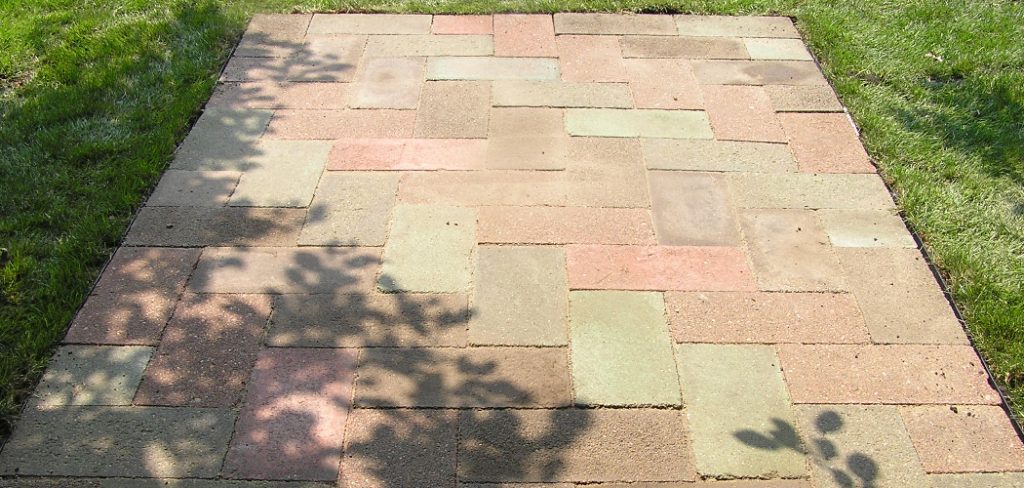
How to extend a concrete patio is an excellent way to add more functional space to your outdoor area, creating room for entertaining, relaxing, or accommodating additional furniture. Whether you need more room for a growing family or simply want to enhance your backyard’s usability, extending your patio can transform your outdoor living space.
This project is not only practical but also adds value to your property. With proper planning, tools, and techniques, even a homeowner with basic DIY skills can successfully expand their existing concrete patio.
What Are the Benefits of Extending a Concrete Patio?
Extending your concrete patio offers many benefits, making it an attractive option for homeowners looking to upgrade their outdoor living space. Some of the most significant benefits include:
- More Space for Outdoor Activities: By extending your patio, you can create more room for outdoor activities such as dining, cooking, and hosting gatherings. This added space also allows for more furniture placement and layout flexibility.
- Increased Property Value: A more extensive and functional patio can significantly increase the value of your property. This is especially true if you live in an area with good weather year-round, where outdoor living spaces are highly sought.
- Cost-Efficient Alternative: Extending your concrete patio is a cost-efficient alternative to building an entirely new one. You can transform your small patio into a spacious outdoor oasis with just a few materials and some DIY skills.
- Seamless Integration: Extending your current concrete patio ensures that the new addition seamlessly integrates with the existing space. This creates a cohesive and unified outdoor area that looks like it was always meant to be there.
What Will You Need?
Before you begin extending your concrete patio, gathering all the necessary materials and tools is essential. Here’s a list of things you’ll need:
- Measuring tape
- Concrete mix
- Shovel
- Level
- Tamper or compactor
- Trowel
- Wooden boards for framing (if desired)
Once you have all your materials, it’s time to start the project!
8 Easy Steps on How to Extend a Concrete Patio
Step 1: Measure and Plan
Proper measurement and planning are The first steps to successfully extending your concrete patio. Begin by deciding how much you want to expand your patio and the shape you want to create. Use a measuring tape to measure the dimensions of the existing patio and mark out the area for the extension. You can use wooden stakes and string to outline the perimeter of the new patio space. This will give you a visual sense of how the extended area will look and fit your current layout.
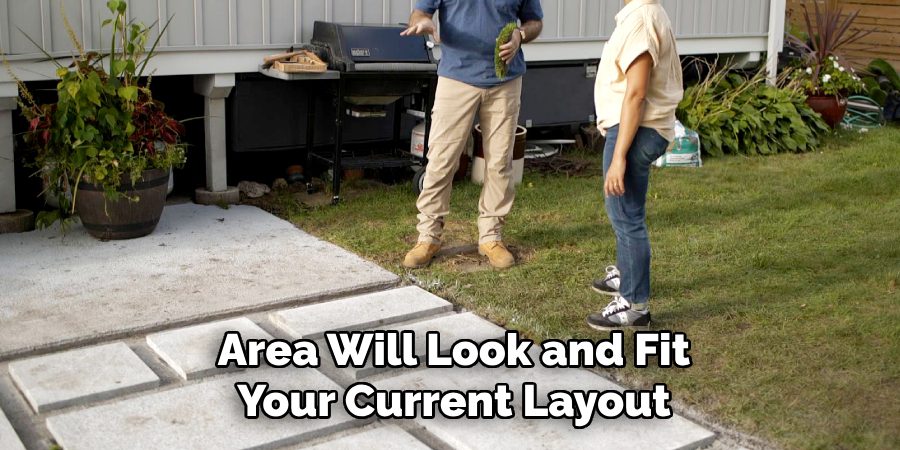
Step 2: Prepare the Ground
Once you’ve planned and marked the area for your patio extension, it’s time to prepare the ground. Remove any grass, weeds, or debris from the marked location using a shovel. Dig down to a depth of about 6-8 inches to create space for the base material and the concrete. Use the tamper or compactor to compact the soil evenly, ensuring a solid foundation for your patio. This step is crucial to prevent settling or cracking over time.
Step 3: Build a Frame
With the ground prepared, the next step is constructing a sturdy frame for your patio extension. Use wooden boards, such as 2x4s, to create a form to hold the concrete in place as it sets. Position the boards along the marked perimeter and secure them with wooden stakes driven into the ground. Ensure the frame is level by using a spirit level and making any needed adjustments. A well-built frame will ensure the concrete sets evenly and creates a clean, professional-looking edge for your patio.
Step 4: Add a Base Layer
Before pouring the concrete, it’s essential to lay a base layer that will provide stability and proper drainage for your patio extension. Spread a layer of gravel, approximately 3-4 inches thick, across the entire area within the frame. Use a rake to distribute it evenly and ensure uniformity. Once the gravel is in place, compact it thoroughly with a tamper or compactor. This step helps create a solid base and reduces the risk of cracking or shifting over time.
Step 5: Mix and Pour the Concrete
Once the base layer is prepared, it’s time to mix and pour the concrete. Follow the instructions on the concrete mix packaging, combine the proper ratio of water, and mix in a wheelbarrow or concrete mixer. Stir thoroughly to ensure a uniform consistency.
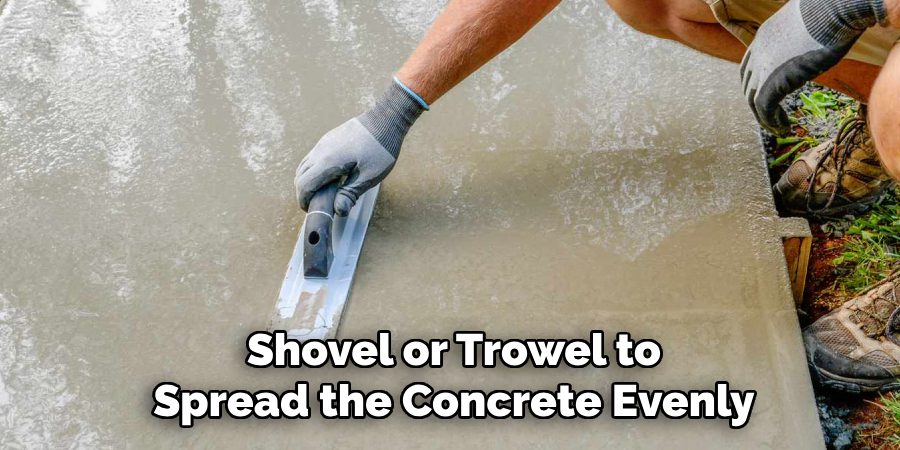
Begin pouring the mixed concrete into the framed area, starting at one corner and working your way across. Use a shovel or trowel to spread the concrete evenly, ensuring it fills all the frame’s corners and edges. To remove air pockets and ensure a smooth surface, run a straightedge or screed board across the top of the frame, leveling the concrete as you go. This step is crucial for creating a sturdy and evenly finished patio surface.
Step 6: Add the Finishing Touches
After leveling the concrete, allow it to settle for a few minutes. Then, use a float to smooth the surface further and create a polished finish. If desired, add texture to the concrete by using a broom or textured roller while the concrete is still wet. This step can improve traction and enhance the appearance of your patio. Once completed, use an edging tool along the frame to create clean, rounded edges for a professional look. Allow the concrete to cure for the recommended amount of time, keeping it moist to prevent cracking. Once fully cured, install any desired decorations or sealants to protect the patio and complete the project.
Step 7: Clean Up the Work Area
Once your patio is complete and the concrete has fully cured, it’s time to clean up the work area. Remove any protective coverings, tools, and construction materials from the site. Dispose of leftover concrete or debris responsibly, ensuring the area is free of hazards. Finally, give the patio a thorough sweep or wash to remove any dust or residue, leaving it ready for use. With everything in place, your new patio is now ready to enjoy!
Step 8: Maintain Your Patio
Regular maintenance is essential to keep your patio looking its best and ensure its longevity. Sweep the surface frequently to remove dirt, leaves, and debris that could stain or degrade the concrete over time. Periodically inspect the patio for any cracks or damage, repairing them promptly to prevent further deterioration. Applying a concrete sealant every few years can help protect against moisture, stains, and weathering.
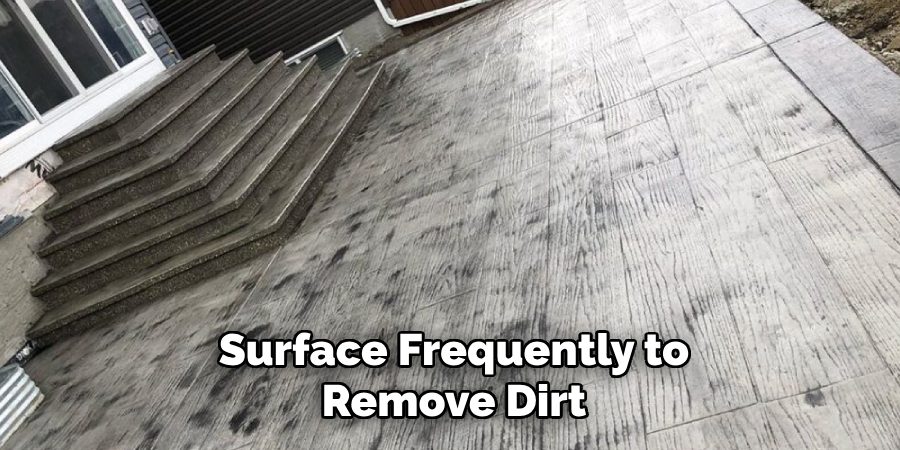
By following these easy steps, you can easily extend your concrete patio and create a beautiful outdoor living space. Remember to plan carefully, prepare the ground properly, and use quality materials for a successful project.
5 Things You Should Avoid
- Skipping Proper Planning: Failing to plan the extension layout, measurements, and structural needs can lead to costly mistakes. Before beginning the work, ensure you account for drainage, slope, and aesthetics.
- Ignoring Building Codes and Permits: Overlooking local building regulations or neglecting to obtain the necessary permits can cause legal issues and may even require you to tear down your project.
- Using Low-Quality Materials: Opting for substandard concrete or reinforcement materials can compromise the durability and safety of your patio extension. Always invest in materials that meet industry standards.
- Pouring Concrete on an Unstable Base: Laying concrete over a poorly prepared or unstable base can lead to cracking and uneven surfaces over time. Ensure proper soil compaction and add a sturdy gravel base.
- Neglecting to Add Joints: Expansion and contraction occur due to temperature changes, so failing to add control joints can result in unsightly cracks. Proper joint placement is crucial to maintaining a smooth, durable finish.
What Type of Concrete is Best for Patio Extensions?
When choosing the type of concrete for your patio extension, consider the climate and local weather conditions.
- Standard Concrete: The most common type of concrete used for patios, standard concrete, is a mixture of cement, sand, and gravel. It’s durable and can withstand most weather conditions.
- Stamped Concrete: This type of concrete can mimic the appearance of other materials, such as brick or stone. It provides a unique design element to your patio but may require more maintenance.
- Colored Concrete: If you want to add color to your patio extension, choose colored concrete. You can create a custom look that complements your outdoor space with various pigment options.
- Exposed Aggregate Concrete: A popular choice for its decorative appeal and slip-resistant surface, exposed aggregate concrete contains added materials such as pebbles or crushed glass for a unique finish.
No matter which type of concrete you choose, ensure it meets the patio’s necessary strength and durability requirements. When deciding, it’s also essential to consider cost, maintenance, and personal preferences.
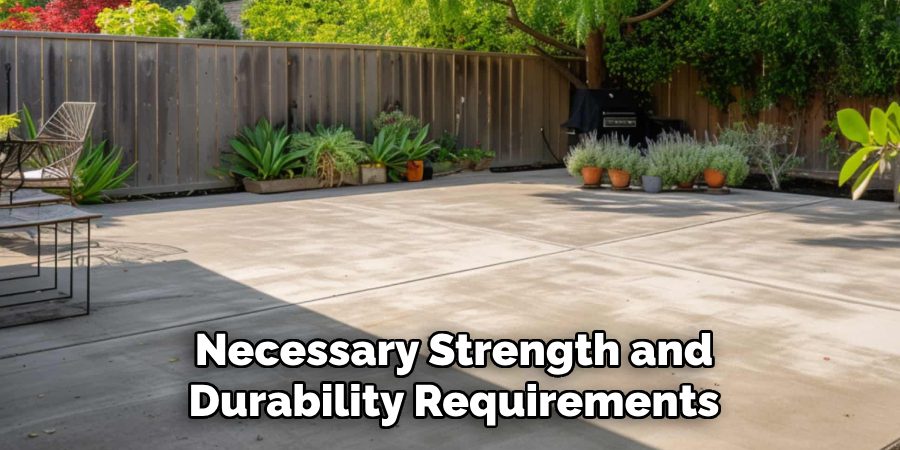
Conclusion
How to extend a concrete patio is an excellent way to enhance your outdoor living space, providing both functionality and aesthetic appeal.
By carefully planning the project, choosing the right materials, and considering factors such as durability and maintenance, you can achieve a high-quality extension that suits your needs. Whether you opt for bare concrete, stamped designs, or decorative finishes like exposed aggregate, ensuring proper installation and professional guidance will result in a lasting and beautiful addition to your home.
A thoughtful patio extension can significantly improve the usability of your outdoor area while adding value to your property.

Professional Focus
Oliver Wood, a passionate patio designer, specializes in creating comfortable and inviting outdoor spaces that enhance relaxation and entertainment. His work combines a deep understanding of design with a love for nature, making him a standout professional in the field of outdoor living spaces. Through his thoughtful approach, he transforms everyday patios into extraordinary retreats for family and friends.
About the Author
Oliver Wood, a skilled patio designer, shares his expertise on outdoor living through his designs and insights. With a background in patio design and a genuine passion for creating beautiful spaces, he encourages others to invest in their outdoor environments, enhancing their homes with functional and inviting spaces for relaxation and entertainment.
Education History
University: Virginia Union University
Oliver’s education equipped him with the knowledge and skills to design patios that merge aesthetics with comfort, transforming outdoor areas into beautiful extensions of the home.
Expertise:
- Patio Design and Outdoor Living Spaces
- Functional and Aesthetic Landscaping
- Comfortable and Inviting Outdoor Environments
- Design Philosophy for Family-Oriented Spaces
- Creating Spaces for Relaxation and Entertainment
